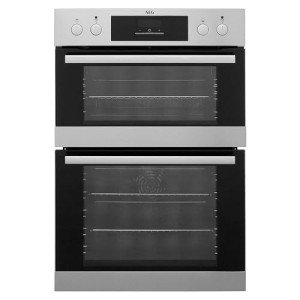10 Misconceptions Your Boss Holds Regarding Oven Built In
페이지 정보

본문

Understanding Built-in Electric Ovens: A Comprehensive Guide
In modern kitchen areas, built-in electric ovens have become a basic function, offering benefit, efficiency, and a sophisticated integration into kitchen style. This post intends to notify house owners and cooking enthusiasts about the advantages of built-in electric ovens, essential factors to consider when selecting one, and maintenance ideas to make sure lasting functionality.
What is a Built-in Electric Oven?
A built-in electric oven is developed to be set up within cabinets or walls, perfectly mixing into the kitchen's architecture. Unlike standalone ovens, these designs save flooring space and can be positioned at eye level, assisting in simple access and tracking while cooking.
Advantages of Built-in Electric Ovens
- Space Efficiency: These integrated ovens For Sale use vertical space, making them perfect for smaller cooking areas or those wanting to optimize counter space.
- Visual Appeal: Built-in ovens offer a clean and contemporary appearance that improves the kitchen's general style.
- Ergonomics: They are set up at comfortable heights, decreasing the strain on the back and knees, particularly when packing or dumping dishes.
- Advanced Features: Many built-in electric ovens featured high-tech functions like clever controls, convection cooking, and self-cleaning choices, which can make cooking simpler and more efficient.
- Enhanced Functionality: Models frequently include additional functions such as several cooking modes, integrated Ovens for sale timers, and temperature probes.
Key Considerations When Choosing a Built-in Electric Oven
When picking a built-in electric builtin oven, numerous aspects should be considered to guarantee it meets your cooking needs and fits within your kitchen layout.
Size and Capacity
Built-in electric ovens normally can be found in different sizes. It's important to measure the assigned space to make sure an appropriate fit. Here are typical sizes:
- Single Oven: 24 to 30 inches wide, ideal for a lot of cooking tasks.
- Double Oven: Two separate compartments, permitting you to prepare numerous meals at different temperature levels.
- Wall Ovens: Available in plus sizes, fit for substantial cooking experiences.
Features
Picking features that line up with your cooking practices is essential. Consider the following choices:
- Convection Cooking: Distributes heat uniformly for consistent outcomes.
- Smart Technology: Enables remote control and preheating via mobile phone apps.
- Self-Cleaning: Simplifies maintenance and cleansing processes.
- Steam Cooking: Adds wetness to meals for much better cooking outcomes.
Installation Requirements
Built-in electric ovens need adequate electrical circuitry and ventilation alternatives. It's recommended to seek advice from specialists during the setup stage to meet electrical codes and make sure safety.
Cost Range
The expense of built-in electric ovens can differ significantly from budget plan options (₤ 600 - ₤ 1,200) to high-end designs (₤ 2,000 and above). Consider your spending plan and cooking frequency when selecting.
| Price Range | Functions | Best For |
|---|---|---|
| ₤ 600 - ₤ 1,200 | Fundamental functions, manual controls | Casual cooks |
| ₤ 1,200 - ₤ 2,000 | Convection, wise technology | Serious home cooks |
| Above ₤ 2,000 | Premium products, advanced functions | Expert chefs or premium cooking enthusiasts |
Upkeep Tips for Built-in Electric Ovens
Making sure that an electric inbuilt oven runs effectively involves regular maintenance. Here are some practical ideas:
- Regular Cleaning: Wipe down the door Integrated Ovens For Sale and inside the oven after each usage to avoid grease accumulation.
- Self-Cleaning Cycle: Utilize the self-cleaning function occasionally (if available). Follow the maker's instructions for optimal efficiency.
- Inspect Seals and Gaskets: Inspect the door seals for wear and tear to keep cooking efficiency.
- Adjust Temperature: Regularly check and adjust the oven's temperature level for accuracy cooking.
- Expert Servicing: Schedule annual upkeep contact certified service technicians, specifically for sophisticated designs with various electronic elements.
Frequently Asked Questions (FAQs)
1. Are built-in electric ovens more efficient than standard ovens?
Yes, built-in intergrated electric oven ovens often have much better insulation and functions like convection cooking that can prepare food faster and equally, saving energy.
2. Can I set up a built-in electric oven myself?
While some convenient people may pick to try a DIY installation, it is advised to employ an expert to ensure safe and certified setup.
3. Just how much power does a built-in electric oven usage?
Usually, built in oven-in electric ovens take in in between 2,400 to 5,000 watts, depending upon the design and functions. Constantly refer to the producer's specifications for accurate figures.
4. Do built-in electric ovens need special cabinets?
Yes, built-in electric ovens need customized cabinets or wall enclaves that support their weight and permit correct ventilation. Ensure that the kitchen cabinetry adheres to installation guidelines laid out by the producer.
Built-in electric ovens are a valuable addition to any contemporary kitchen, providing a range of features that make cooking easier and satisfying. By comprehending the advantages, choice criteria, and maintenance requirements associated with these ovens, consumers can make informed choices that align with their cooking requirements and lifestyle preferences.
- 이전글15 Best Hobs Sale Bloggers You Should Follow 25.05.20
- 다음글10 Healthy Private Psychiatrist Habits 25.05.20
댓글목록
등록된 댓글이 없습니다.



